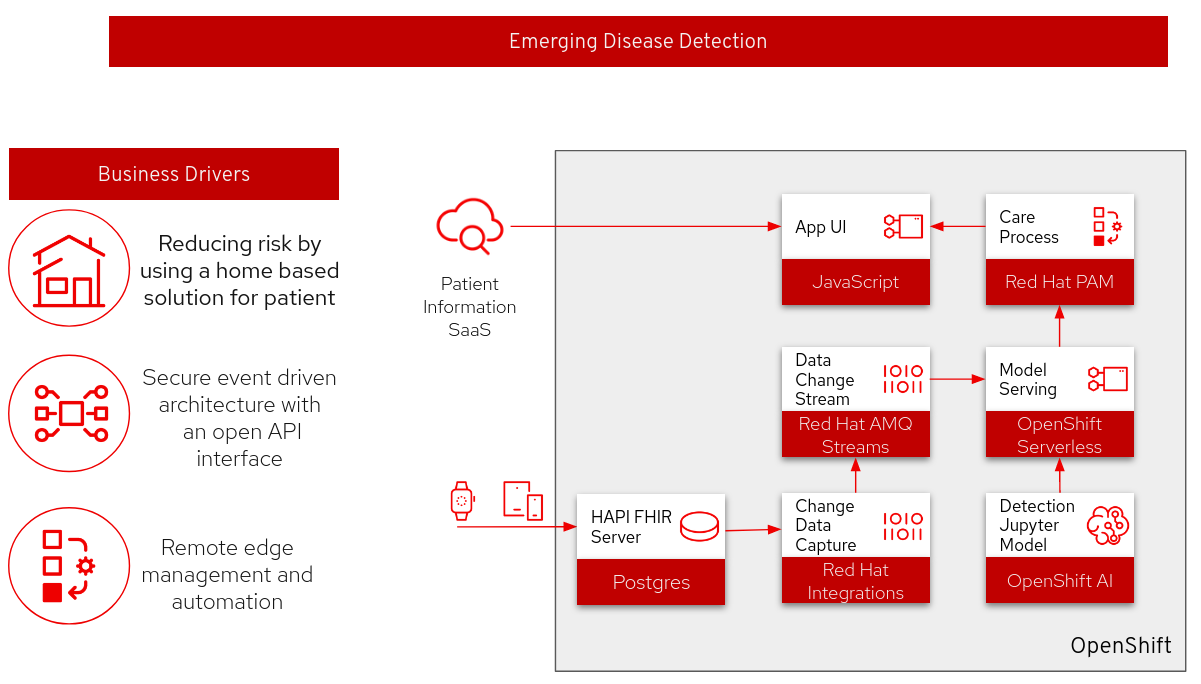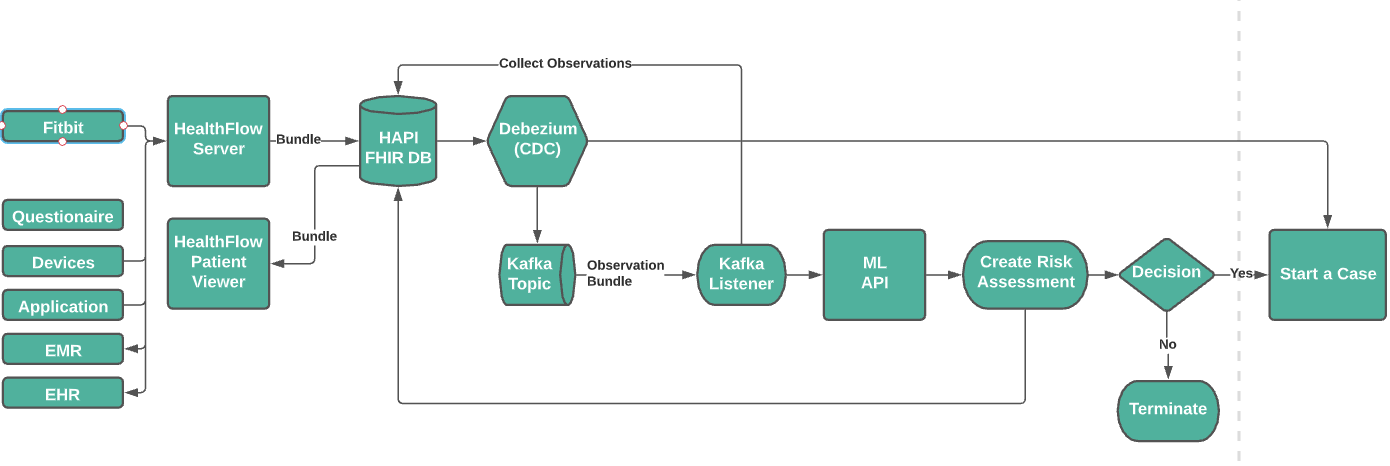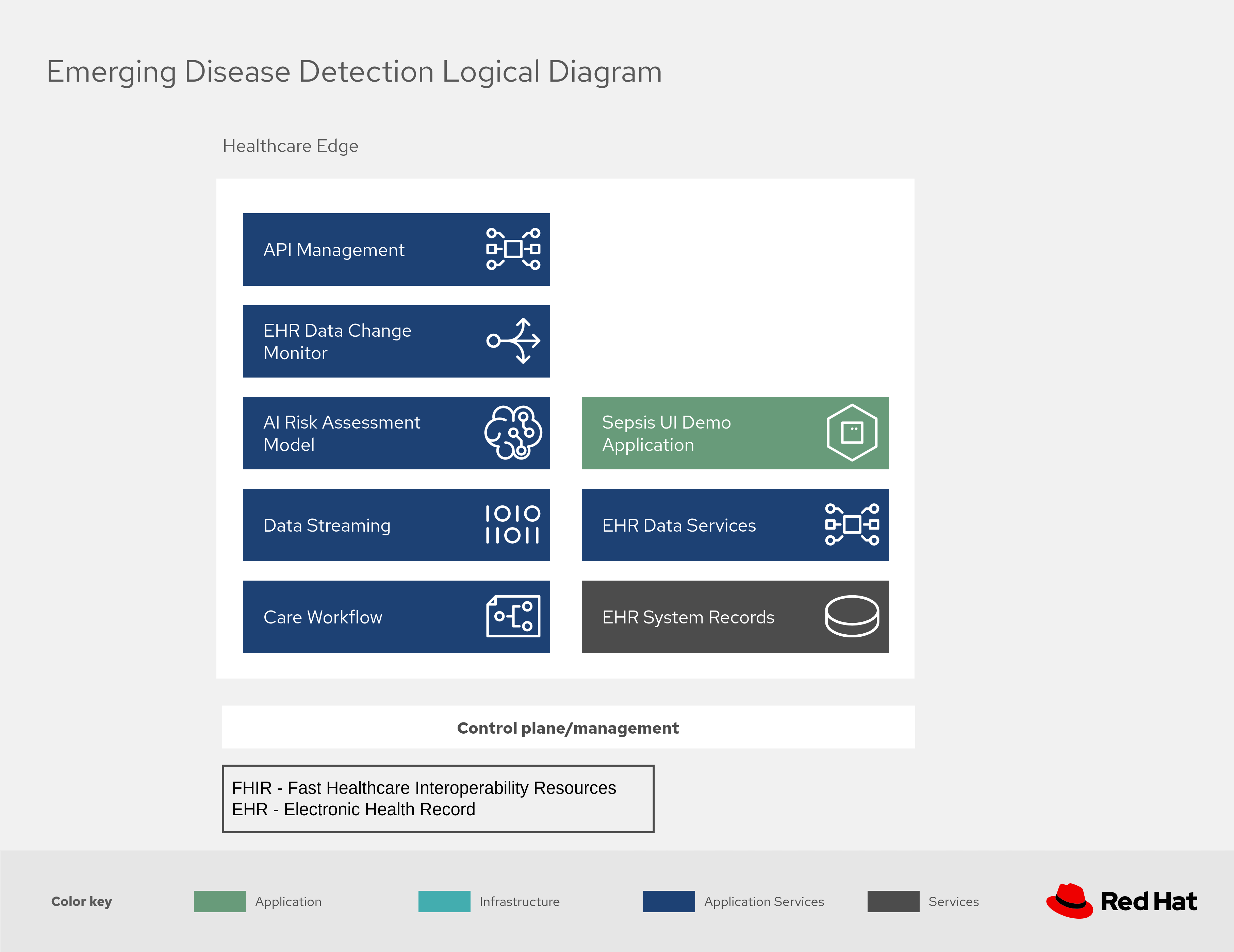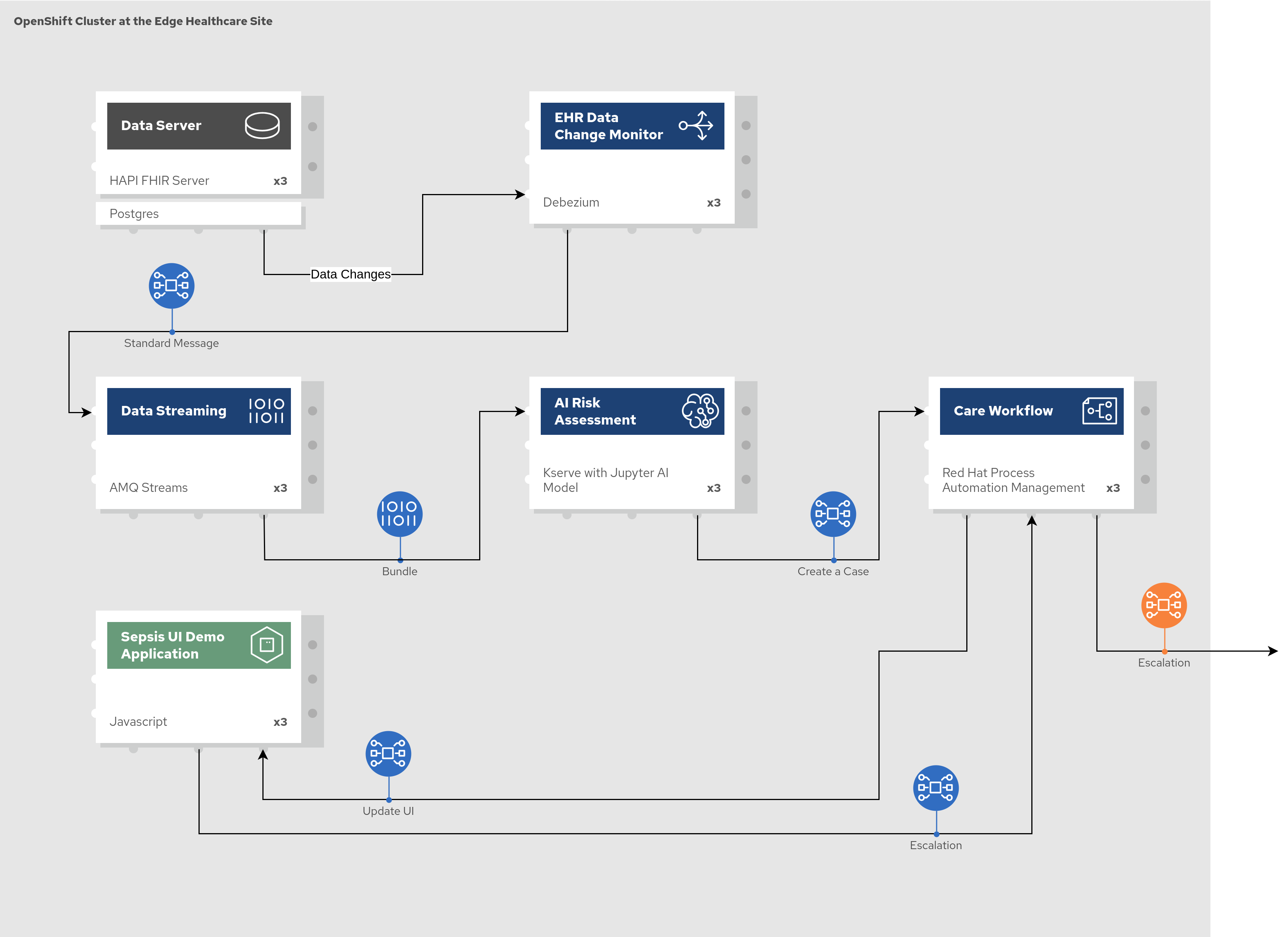
Emerging Disease Detection
Validation status:
CI status:
Links:
About the Emerging Disease Detection pattern
- Use case
Use a GitOps approach to manage a hybrid cloud deployment for an AI emerging disease detection system.
Use a AI automation at the edge to detect emerging diseases.
Use an event driven architecture
Enable application lifecycle management.
Securely manage secrets across the deployment.
- Background
No technology is better poised to transform Healthcare as AI and Business Process Automation. Coupled with an Edge Architecture, these continuous monitoring and detection systems can scale to provide early warning intervention and measurable process improvements, anywhere.
Detection of disease states like sepsis, stroke, pulmonary embolism, and heart attack requires low-latency, broadband, asynchronous streaming capabilities. We have prototyped an early warning platform built with a distributed edge architecture, fed by at-home post-operative monitoring (fitbit, smart phone, wifi devices) and automated Clinical care escalation and coordination processes. This platform has the potential to significantly lower network traffic and cost while providing early warning interventions for our nation’s Veterans.
About the solution
To demonstrate the effectiveness of the solution this pattern focuses on the specific problem of Sepsis. Sepsis is the body’s extreme response to an infection. It is a life-threatening medical emergency. Sepsis is a costly and life threatening condition that can result in multi-organ failure. Beating conditions like sepsis requires rapid detection and mitigation of risks. With the immune system compromised, recovery at home is often preferred to minimize the risk for cross-infections, yet medical teams often lack the capability to perform constant surveillance for emerging risks across their patient cohorts, especially in rural settings. In this session, we will demonstrate an early warning system driven by Clinical AI at the Edge, fed by at-home post-operative monitoring and automated Clinical care escalation and coordination processes.
Solution Discussion and Demonstration
In this demonstration, we will follow a vulnerable, post-operative patient, Alani, as she recovers from surgery in her home setting. The pattern demonstrates an early warning system driven by Clinical AI at the Edge, fed by at-home post-operative monitoring and automated Clinical care escalation and coordination processes.
This architecture pattern demonstrates three strengths:
Enabling healthcare at the edge
Taking healthcare past the edge of the cloud to support care processes in Low Bandwidth environments.
AI integrated into healthcare team workflows
BPM+ Health workflows support plug & play AI modules embedded into clinical workflows as Clinical Decision Support.
Event driven, Intelligent automation
Clinical best practices & processes automated using BPM+ Health authored workflows using FHIR API endpoints.
For a thorough explanation of this solution in the context of Sepsis detection please consider reviewing the following 25 minute video.
Overview of the solution in Sepsis Detection
Overview of the Architecture
As data arrives from Alani’s various monitoring devices her latest metrics are collected in the FHIR database. Debezium is an open source distributed platform for change data capture. It will create an observation bundle for streaming to the AI model. This, in turn, will create a risk assessment and provide that to the process automation for review with Alani’s doctor or the on-call doctor that is available. Their assessment may trigger further process workflows.
In the following figure, logically, this solution can be viewed as being composed of an automation component, unified management including secrets management, and the clusters under management, all running on top of a user-chosen mixture of on-premise data centers and public clouds.
About the technology
The following technologies are used in this solution:
- Red Hat OpenShift Platform
An enterprise-ready Kubernetes container platform built for an open hybrid cloud strategy. It provides a consistent application platform to manage hybrid cloud, public cloud, and edge deployments. It delivers a complete application platform for both traditional and cloud-native applications, allowing them to run anywhere. OpenShift has a pre-configured, pre-installed, and self-updating monitoring stack that provides monitoring for core platform components. It also enables the use of external secret management systems, for example, HashiCorp Vault in this case, to securely add secrets into the OpenShift platform.
- Red Hat OpenShift GitOps
A declarative application continuous delivery tool for Kubernetes based on the ArgoCD project. Application definitions, configurations, and environments are declarative and version controlled in Git. It can automatically push the desired application state into a cluster, quickly find out if the application state is in sync with the desired state, and manage applications in multi-cluster environments.
- Red Hat Ansible Automation Platform
Provides an enterprise framework for building and operating IT automation at scale across hybrid clouds including edge deployments. It enables users across an organization to create, share, and manage automation, from development and operations to security and network teams.
- Red Hat AMQ Streams
Red Hat AMQ streams is a massively scalable, distributed, and high-performance data streaming platform based on the Apache Kafka project. It offers a distributed backbone that allows microservices and other applications to share data with high throughput and low latency. Red Hat AMQ Streams is available in the Red Hat AMQ product.
- Red Hat Single Sign-On
Based on the Keycloak project, Red Hat Single Sign-On enhances security by enabling you to secure your web applications with Web single sign-on (SSO) capabilities based on popular standards such as SAML 2.0, OpenID Connect and OAuth 2.0.
- Hashicorp Vault
Provides a secure centralized store for dynamic infrastructure and applications across clusters, including over low-trust networks between clouds and data centers.
This solution also uses a variety of observability tools including the Prometheus monitoring and Grafana dashboard that are integrated with OpenShift as well as components of the Observatorium meta-project which includes Thanos and the Loki API.
Next steps
Deploy the management hub using Helm.



